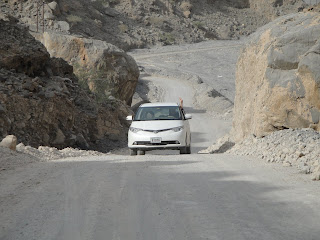
I've been in Abu Dhabi for not quite two weeks now, interning with the United Nations Development Programme, and the contrast with Dubai is interesting. I will admit that I had a lot of preconceptions before I got here; several people I know in the US with experience over here told me that I would like Abu Dhabi much better than Dubai. They told me that while Dubai was all glitz and media hype, Abu Dhabi was a more relaxed, somewhat more traditional Middle Eastern City.
In contrast, once I got to Dubai, all the UAE people I met, regardless of where they came from initially, warned me that Dubai was where all the action was, and Abu Dhabi was just boring.
After a week and a half, I can say that neither of these is really true; Abu Dhabi certainly isn't more "traditional" as far as I can tell - there are far more old buildings, neighborhoods, souqs, and dhow wharves in Dubai. In many ways, Dubai remains much more linked in with its traditional commerce activities, where oil-driven Abu Dhabi has just built a massive amount of apartments and office buildings from scratch.
But its not boring, really - its a little less colorful and active than Dubai, but the problem seems to be one of timing. Everyone talks about the contruction in Dubai, but at least in 2009, there seems to be much more here. Half the city is a construction site, and some of the plans look really interesting. There's a Formula 1 Grand Prix racetrack under construction on the next island over. Just this week, Abu Dhabi won the hosting rights for IRENA, the new international organization for renewable energy - its going to be housed in a whole section of the city, called Masdar, built to develop and test green technology. The plans look as crazy as anything we saw in Dubai - but none of it is finished yet. Even Qasr al-Hosn, the traditional palace of the ruler and seemingly the only building in the city built before 1970, is closed for renovation until next year.
So at the moment, I have the opportunity to experience what should be a really interesting and fantastic city in a couple of years. Right now its a city in transition - but getting a feel for what came before is a worthwhile enough pursuit, even if just to see how quickly the Gulf can change once it decides to do so. That, and the water is beautiful and much easier to get to than in Dubai - I'll content myself with that.







